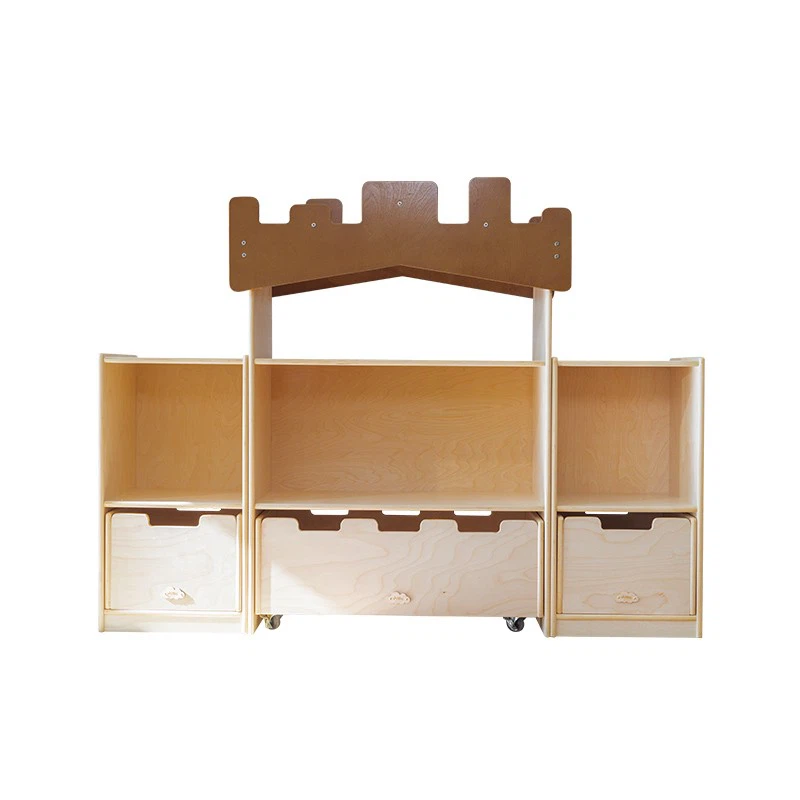
Castle Combination A
A combination cabinet in kindergartens is a versatile and functional piece of furniture designed to cater to the diverse storage and organizational needs of young children and their teachers. These cabinets typically incorporate multiple storage solutions within a single unit, making them ideal...
Product Details
A combination cabinet in kindergartens is a versatile and functional piece of furniture designed to cater to the diverse storage and organizational needs of young children and their teachers. These cabinets typically incorporate multiple storage solutions within a single unit, making them ideal for the dynamic and playful environment of a kindergarten classroom.
Key Features and Benefits:
Multi-Purpose Storage:
Cubbies and Shelves: Provide individual spaces for children to store their personal items like backpacks, lunch boxes, and shoes.
Bins and Drawers: Perfect for organizing smaller items such as art supplies, toys, and educational materials.
Lockers: Secure compartments for storing more valuable or sensitive items.
Accessibility:
Child-Friendly Design: Cabinets are often designed at a height that is accessible for young children, promoting independence and self-organization.
Open Shelving: Makes it easy for children to see and select items, encouraging them to clean up after themselves.
Durability and Safety:
Sturdy Construction: Made from robust materials like wood or high-quality plastic to withstand daily use.
Rounded Edges: To prevent injuries from sharp corners.
Non-Toxic Finishes: Ensures that the materials are safe for children to handle.
Educational Value:
Color-Coded Sections: Helps children learn organizational skills and color recognition.
Label Holders: Allow teachers to label sections or bins, aiding in literacy development and promoting a structured environment.
Mobility and Flexibility:
Casters: Some cabinets come with wheels for easy movement, allowing for flexible classroom layouts.
Modular Design: Can be reconfigured or expanded based on changing needs.
Implementation in Classroom:
Personal Storage: Assign each child a cubby or locker for their belongings to teach responsibility.
Activity Zones: Use cabinets to create different zones in the classroom, such as reading areas, art stations, and play corners.
Resource Organization: Keep teaching materials and resources organized and easily accessible, which helps in smooth transitioning between activities.
Examples of Combination Cabinets:
Art Supply Storage Unit: Includes compartments for paper, paints, brushes, and other art materials.
Reading Nook Cabinet: Features book shelves along with seating space, combining storage with a cozy reading area.
STEM Activity Cabinet: Equipped with bins and shelves for storing science kits, building blocks, and math manipulatives.
In summary, combination cabinets in kindergartens play a crucial role in maintaining an organized, efficient, and safe learning environment. They support the developmental needs of young children by promoting independence, organization skills, and a sense of responsibility, while also providing a practical solution for teachers to manage classroom resources effectively.
Send Inquiry

